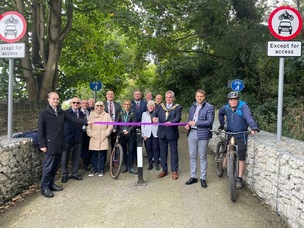In the world we live in now, where things change quickly, schooling is going through a big change. The use of technology in early childhood education has become a game-changer, changing the way standard teaching methods are used and making it possible for children to learn better. "From Crayons to Computers: The Impact of Technology on Early Childhood Education" is a trip that looks at how technology has changed education. It combines the charm of pencils with the power of computers to make a learning setting that is more complete.
A prime instance of technology's integration into education is the remarkable surge in contemporary online resources catering to students' needs. This influx has revolutionized the learning landscape, granting students access to an array of virtual educational tools. A notable player in this arena is EduBirdie, renowned not only as a top-tier essay writing service but also as a repository of diverse educational aids. Among its offerings, in addition to being an essay writing service, are tools to detect plagiarism and an assortment of informative guides tailored to assist students in various aspects of their academic journey. This trend underscores how technology is reshaping education, fostering a more accessible and interactive learning environment.
From crayons to computers: How education has changed over the years
The combination of old-fashioned teaching tools like crayons and new technology like computers has changed the way young people learn about new things. This change has led to a number of good things, including:
Interactive Learning: With the help of technology, teachers can make interactive lessons that fit different ways kids learn. This makes learning more fun and interesting for kids.
-
Personalized education: With the help of technology, teachers can make lessons fit the needs of each student, giving each child a unique way to learn.
-
Access to Information: Computers and the internet give young people access to a lot of information, which makes them curious and makes them want to learn more.
-
Skill Development: Educational apps and tools help kids improve their thinking, movement, and problem-solving skills, which are all important for life.
How to Navigate the Digital Landscape: Opportunities and Benefits
Adding technology to early childhood education has opened up a lot of chances and benefits for both teachers and students:
When teachers use technology to help teach, they can:
-
Make content that is interesting by using video tools to make lessons that are visually appealing and will keep kids' attention and make learning more fun.
-
Track Progress: Digital tools let teachers keep an eye on how their students are doing, find learning gaps, and step in at the right time.
-
Professional Development: Teachers can use online tools to improve their skills and keep up with the latest trends in education.
Technology offers these things to young learners
-
Multisensory Learning: Apps and games that are interactive excite more than one sense, which helps people understand and remember things better.
-
Global Learning: Virtual partnerships and video calling help students from all over the world work together and learn about other cultures.
-
Creativity and Expression: Digital tools let kids use art, music, and stories to show how creative they are.
Bridging the Gap: Fairness and Being Open to Everyone
Even though technology has many benefits, questions have been raised about fairness and inclusion:
-
Digital Divide: Students from different financial backgrounds can stay at a disadvantage if they don't have the same access to technology and the internet.
-
Language Barriers: People who don't know English as their first language may find it hard to use digital learning tools that mostly use English.
-
Screen Time: It is important to keep a good mix between screen time and other things to do so that people don't spend too much time in front of screens.
Taking care of worries: finding the right balance
In the trip "From Crayons to Computers: The Impact of Technology on Early Childhood Education," it's important to address possible worries and find ways to find a balance:
-
Guided Exploration: Let kids explore technology with the help of an adult, making sure they do things that are useful and educational.
-
Screen-Free Zones: Set aside certain places or times for activities without screens to encourage physical play, socializing, and artistic projects.
-
Parental Involvement: Work with parents to make sure that learning at school and at home complements each other.
-
Diverse Learning Tools: Give a mix of traditional tools, like pencils, and newer technologies, like computers, so that people with different learning styles can use them.
Expert Advice: Taking care of digital natives
Experts in child development and education say it's important to teach kids good tech habits from a young age:
Dr. Jane Mitchell, a child psychologist, supports a balanced method that includes both hands-on learning and the benefits of technology.
Professor David Chen, an expert in education, says that teachers should learn how to use technology in the classroom so that it can be used to its fullest teaching potential.
Early Childhood Education Expert Dr. Sarah Harper talks about how parents can help guide their kids' digital activities and keep them safe online.
FAQs
How young is too young to teach kids about technology?
A: The right age changes, but experts recommend starting between the ages of 3 and 4, making sure to start slowly and in a healthy way.
What are the best apps for young children to learn with?
A: Apps like ABCmouse, Khan Academy Kids, and PBS Kids have material that is both fun and useful for young kids.
How can parents help their kids learn at home with technology?
A: Parents can do digital tasks with their kids, limit how much time they spend in front of a screen, and find digital tools that match their child's hobbies.
Does too much time in front of a computer have any risks?
A: Long periods of computer time may affect sleep, brain growth, and how people get along with each other. It's important to find a good mix between screen time and time spent outside.
How can teachers make sure that all kids get the same benefits from technology?
A: By giving everyone the same access to technology, giving a variety of learning tools, and adapting the lessons to fit different ways of learning.
What part does play have in a place where tech is used in early education? A: Play is still important for developing imagination, social skills, and problem-solving skills, and it goes well with learning that is based on technology.
The journey "From Crayons to Computers: The Impact of Technology on Early Childhood Education" shows how technology has become an important part of modern education. To get the most out of learning, it's important to find a balance between standard tools and new technologies. Together, teachers, parents, and experts can shape the future of early childhood education by creating a welcoming, engaging, and creative learning environment. This will make sure that the move from crayons to computers is a smooth and rewarding one.
#Sponsored Article




























